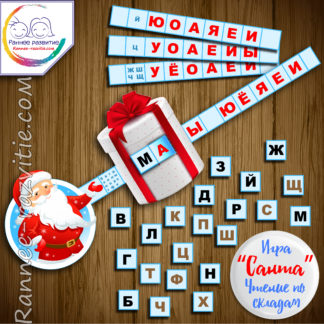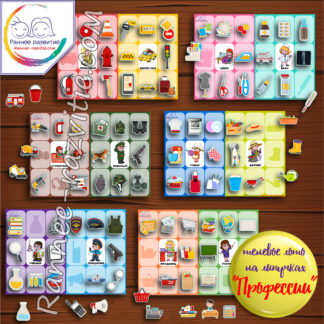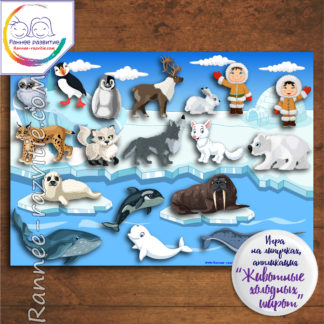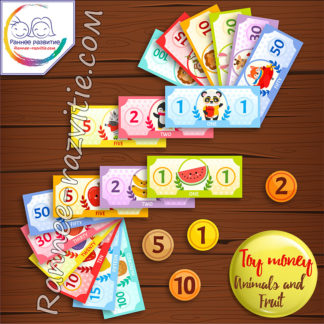Правила игры и инструкция по изготовлению
How to play?
To begin with, children need to come up with a game in which they will use coins or paper money. For example, it can be a game at the grocery or clothing store, or a game of bank.
Then you need to assign roles. For example, between a buyer and a seller (if you play in a store) or between a bank employee and a visitor (if you have chosen to play the bank).
You can come up with several options for playing the store, which will help the child feel like on the side of the buyer and the seller.
Additional visual material is required for the game. Any pictures or cards depicting a particular product will do.
1) Didactic game «Buy a product». Lay out product cards and price tags for them in front of the child.
Ask him to buy everything from the cheapest to the most expensive. The child must independently select the required number of bills
and coins and pay for the purchase without change.
2) Didactic game «Buy everything».
Take some product cards (first 2, then 3, and finally 4). Match each card with the required number of bills and coins to pay for goods without change. Then shuffle the money and put it in one pile. The child’s task is to correctly distribute the bills and coins on the product cards so that you can buy all of them, paying for each individual purchase without change.
3) Didactic game «Sell the goods». Divide all the money in two so that the child retains most of the money. Place the product cards on the table. In this game, the child acts as a seller: buy goods from him, giving amounts in excess of the price tag, so that the child gives you change.
4) Didactic game «Buy and sell».
Divide all the money in two so that the child retains most of the money. Place the product cards on the table – half for yourself, half for the child. Take turns buying cards from each other. Try to give amounts in excess of the price tag so that the child gives you change.
How to make a game?
Print materials on thick photo paper. Laminate for durability and reusability.


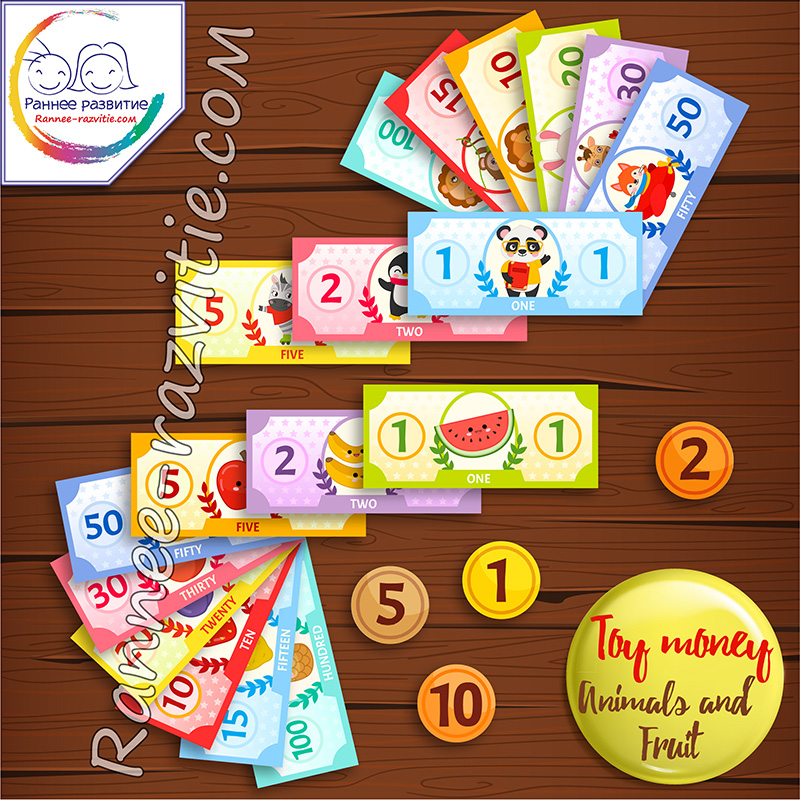
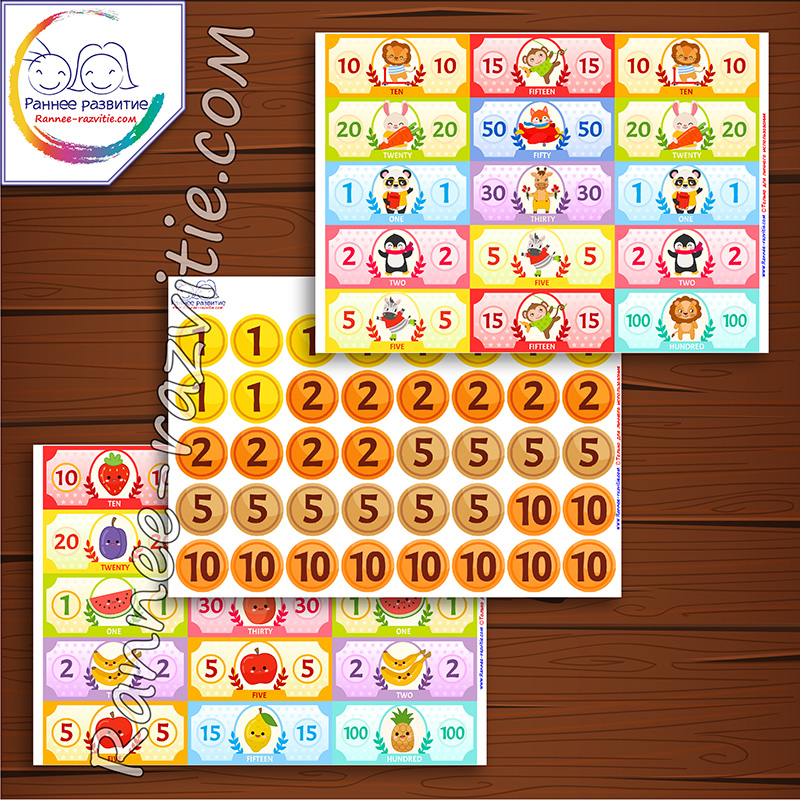
 Didactic game
Didactic game 